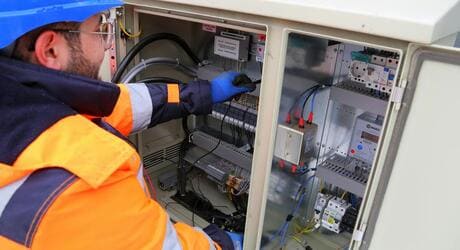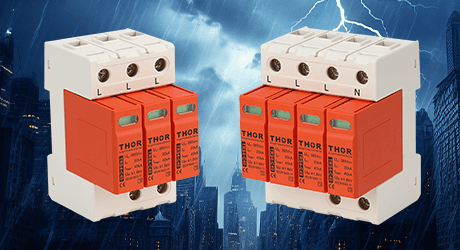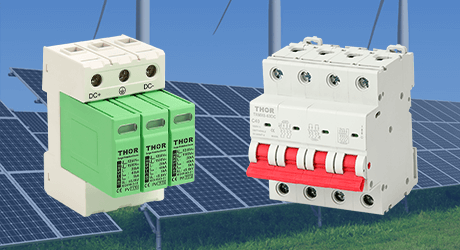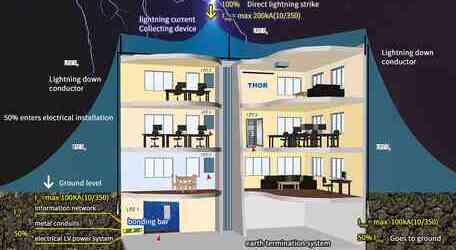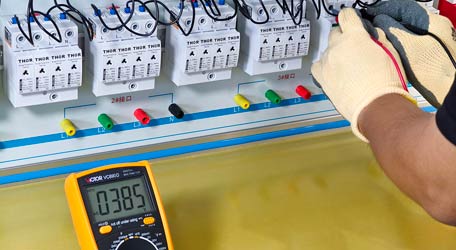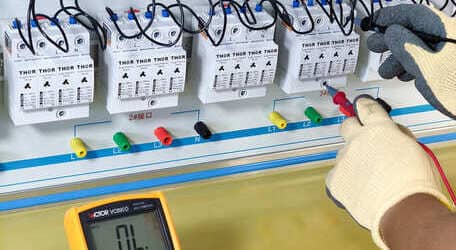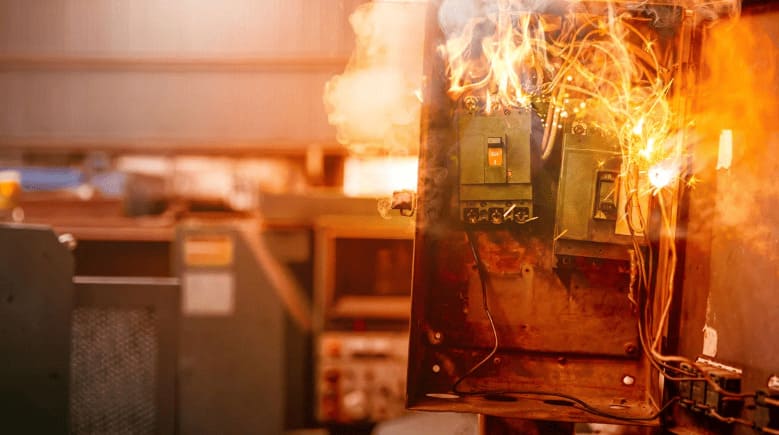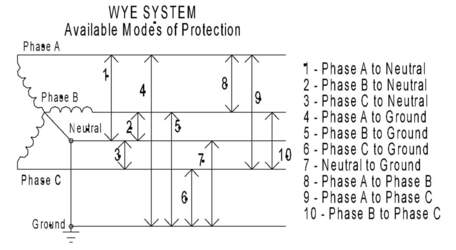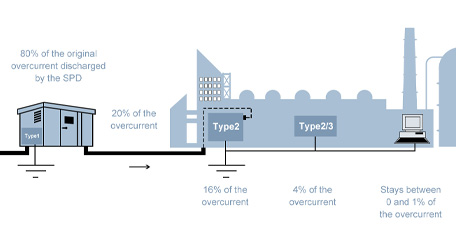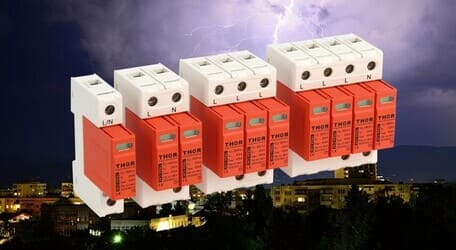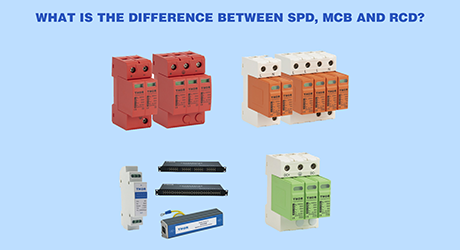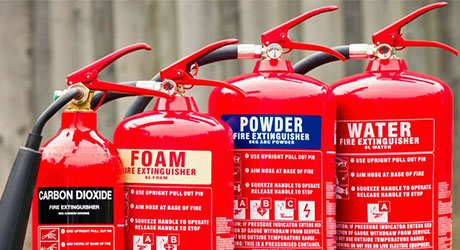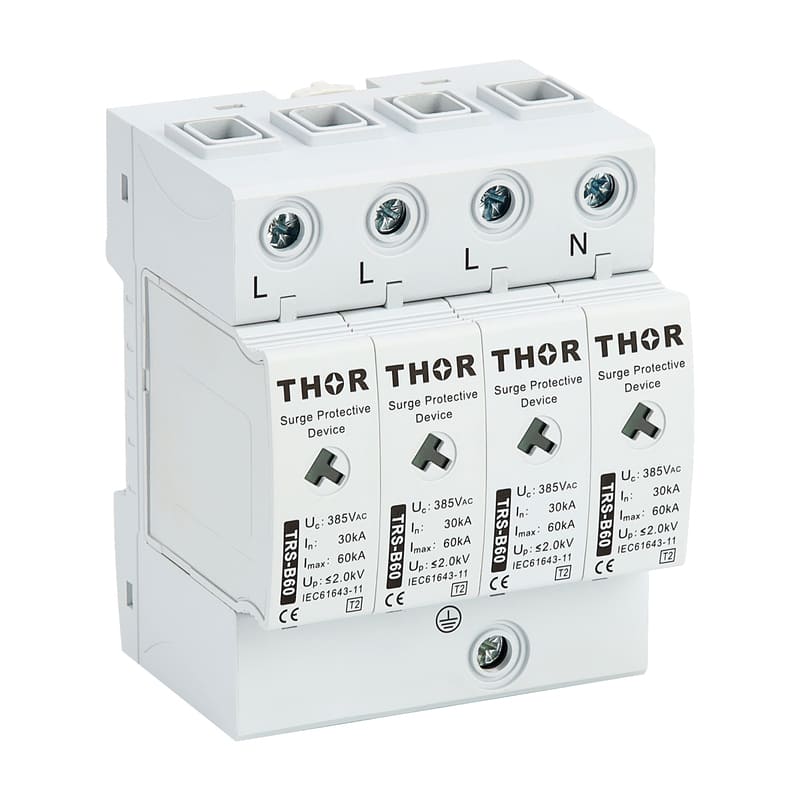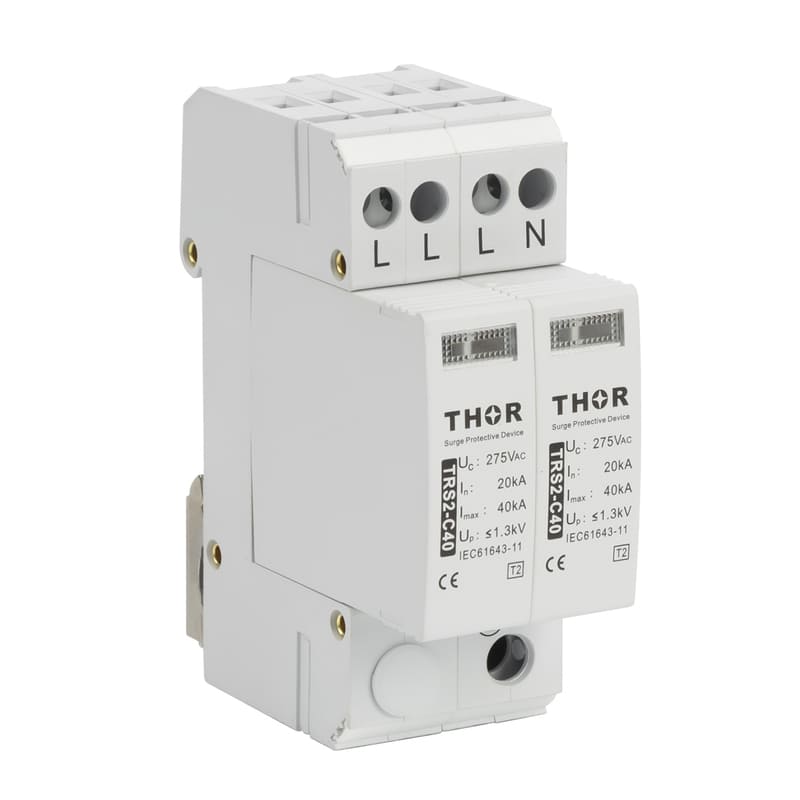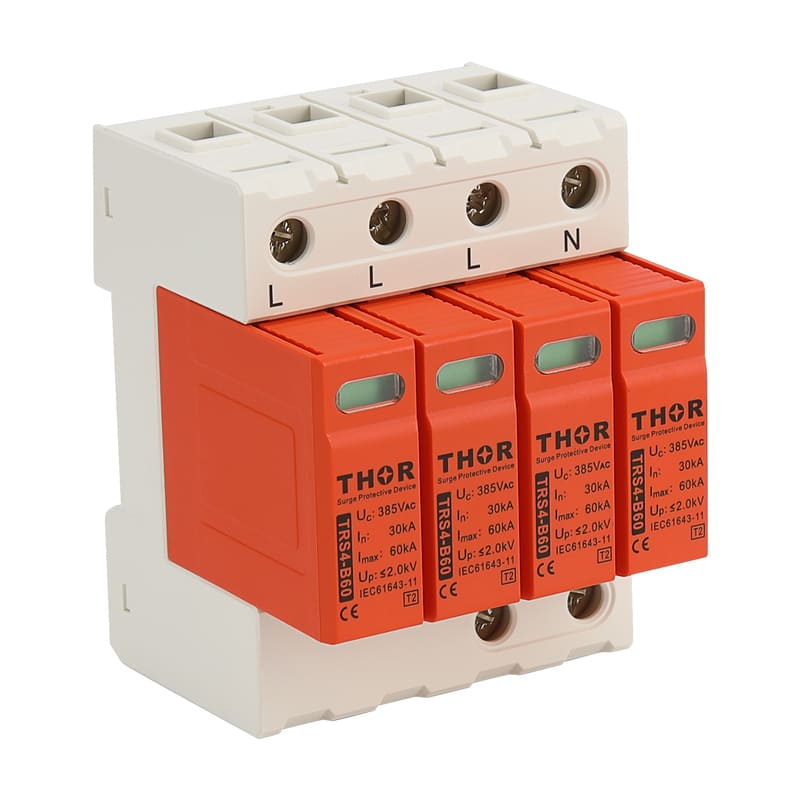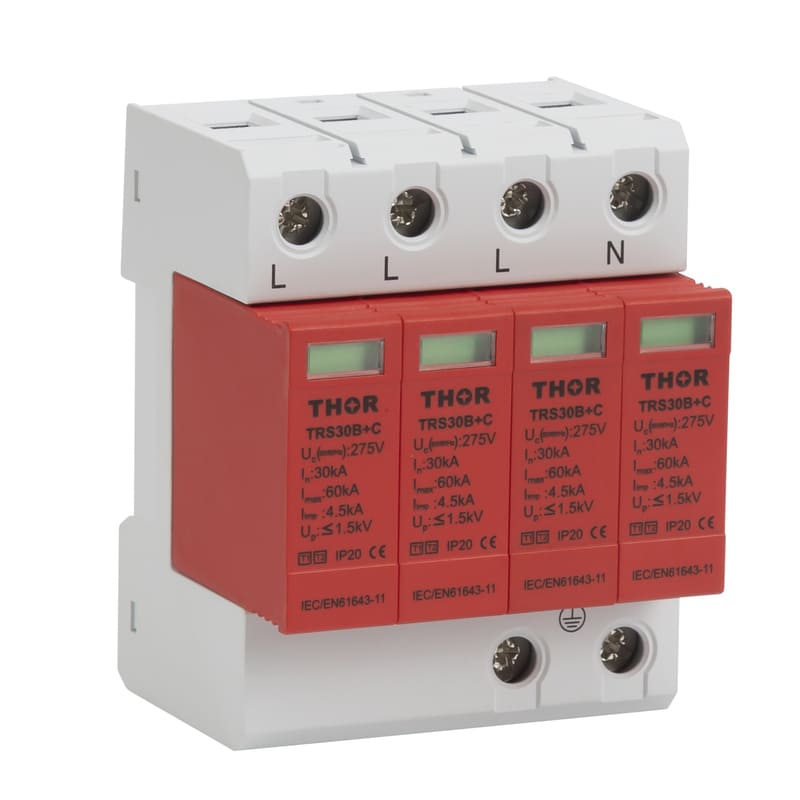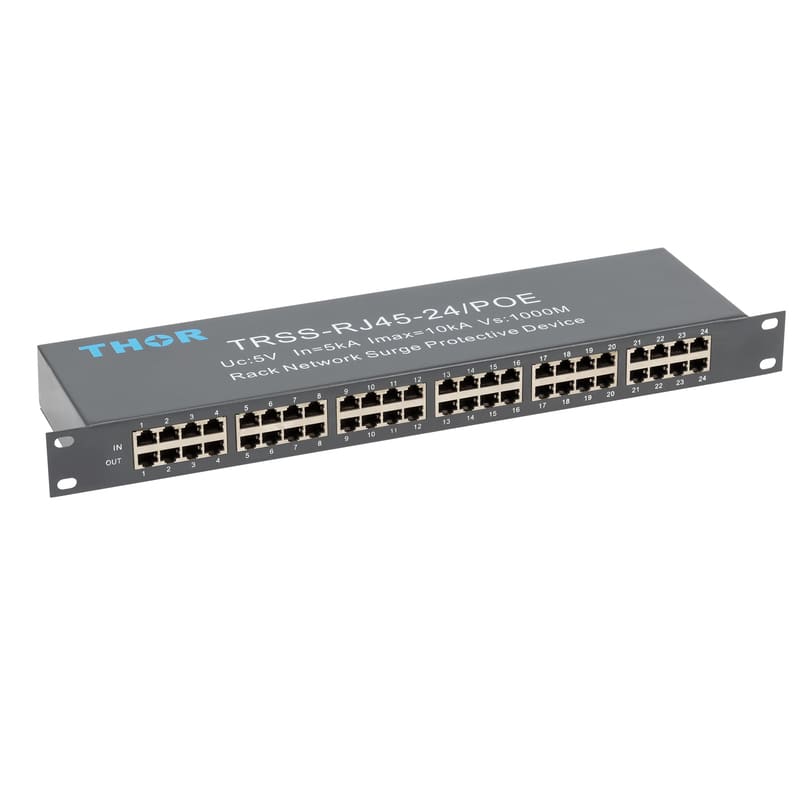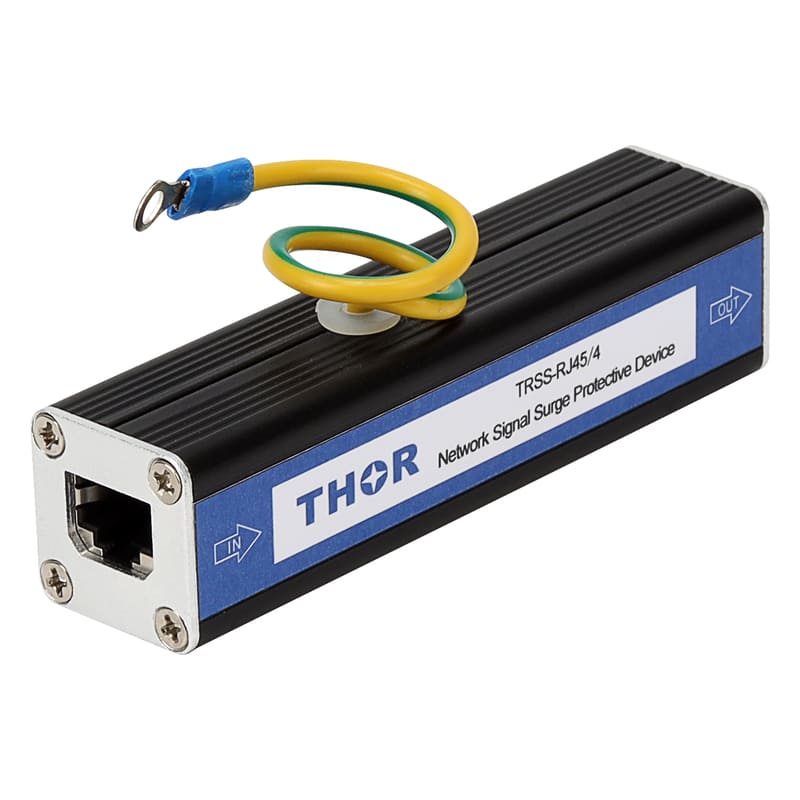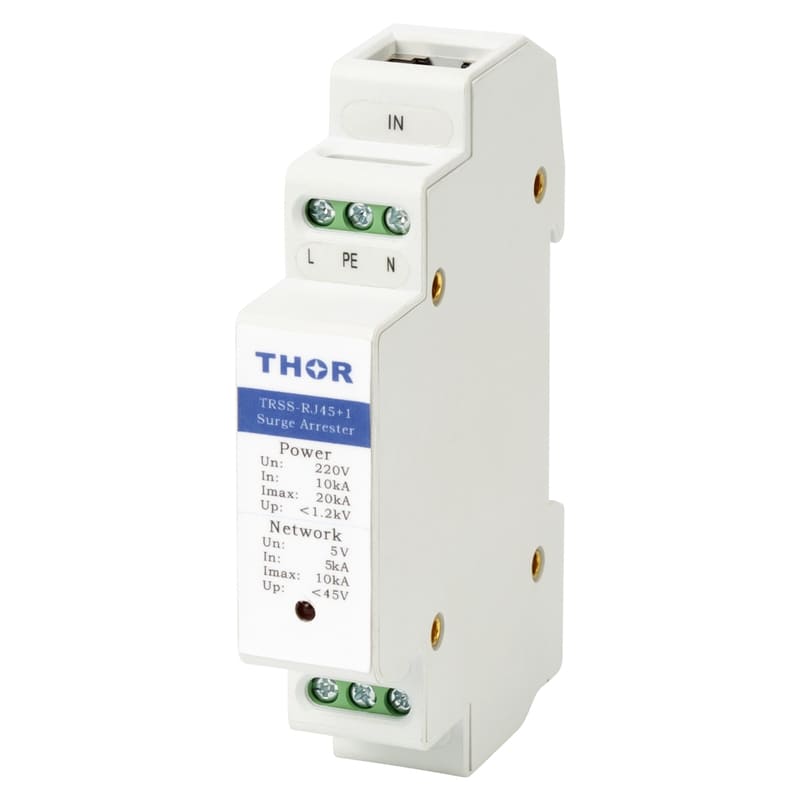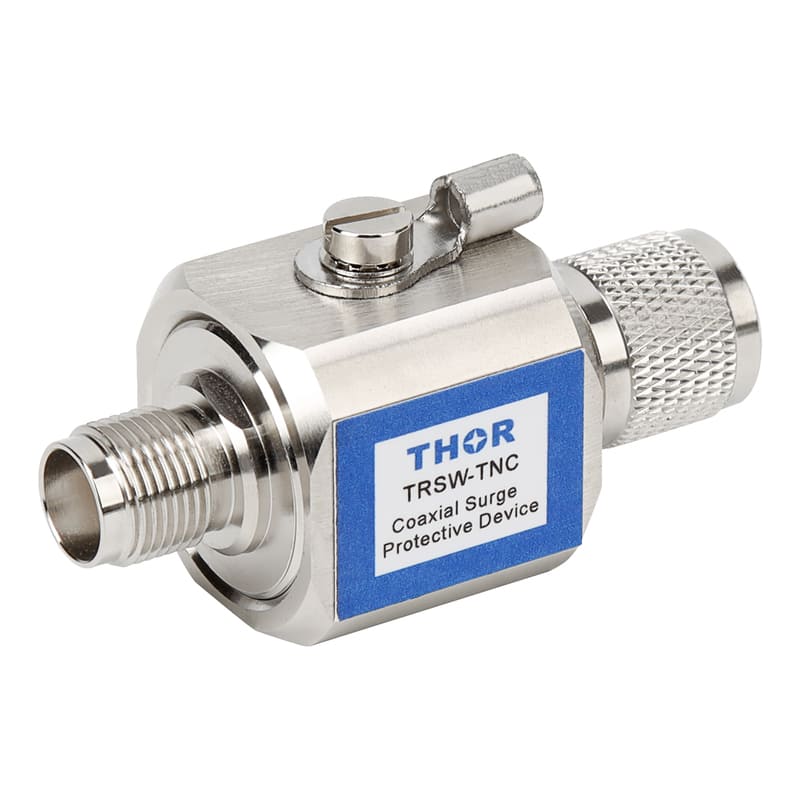A deep understanding of the coordination between electrical protection devices is essential for engineers, contractors, and system integrators aiming to design resilient and compliant low-voltage installations. Among the many devices available, Surge Protection Devices (SPD), Miniature Circuit Breakers (MCB) and Residual Current Devices (RCD) play a key role in protecting circuits and their connected equipment. But what is the difference between the three?
Understanding the devices: SPD, MCB, and RCD explained
What is a surge protection device (SPD)
SPDs, or AC surge protectors, are specifically designed to protect electrical equipment from voltage spikes. Here's how it works:
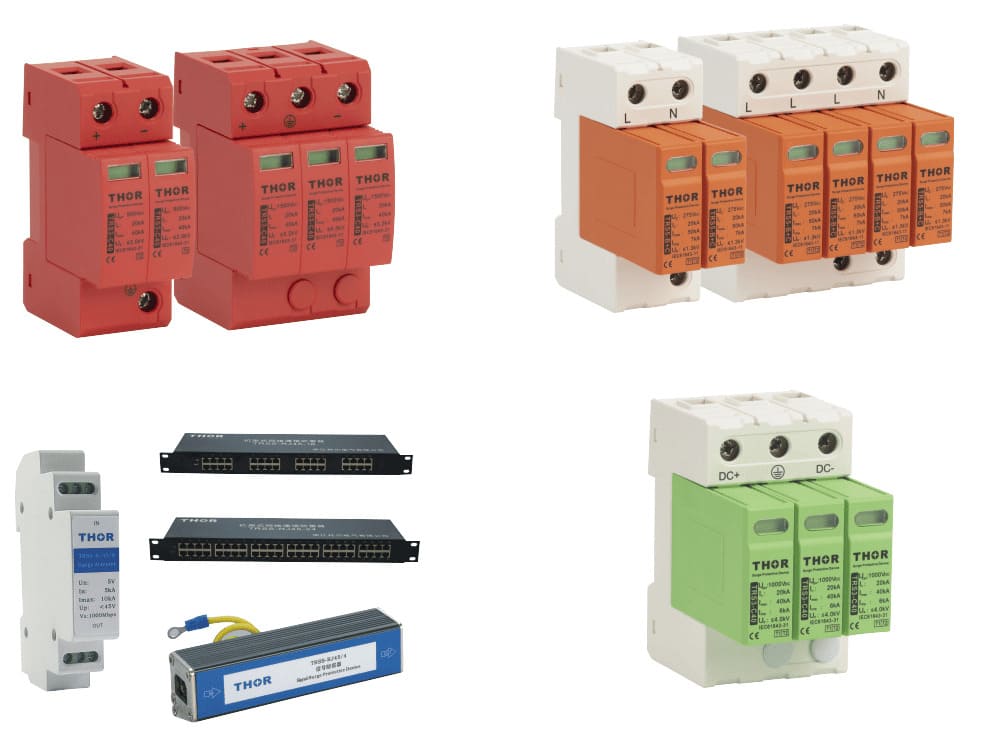
AC Surge protection devices from Thor
● Purpose: The main function of the SPD is to limit transient overvoltages and divert inrush currents. It provides a short path for the surge to reach the ground, thereby protecting the equipment connected to it.
● Trigger: It activates in response to a voltage surge, which can be caused by a variety of sources, including lightning strikes or grid disturbances.
● Protection: SPDs primarily protect against transient overvoltages that can damage, degrade, or destroy electronic equipment or components to which they are connected.
What is a miniature circuit breaker (MCB)
MCB serves as a replacement for fuses in most modern circuits, and its primary role is slightly different from that of SPD:
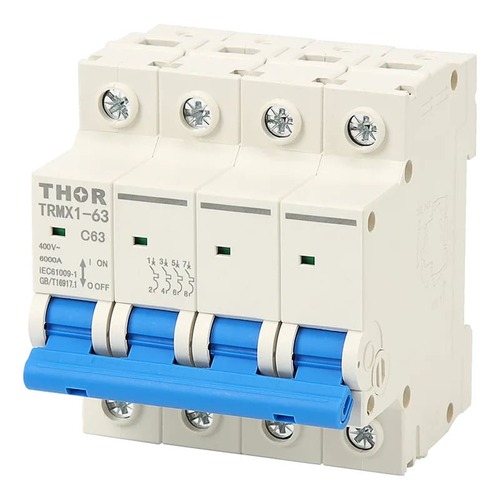
AC TRMC series mini circuit breaker
● Purpose: The main job of MCB is to protect the circuit from damage caused by overload or short circuit. If a fault occurs, the miniature circuit breaker will "trip" or open the circuit.
● Trigger: Activates when the current flowing through the circuit exceeds the rated limit of the MCB. It can happen due to an overload (too many devices connected) or a short circuit (current bypassing its normal path).
● Protection: MCBs primarily protect wiring within a building from overheating or potential fire hazards caused by overloads or short circuits.
What is a residual current device (RCD)
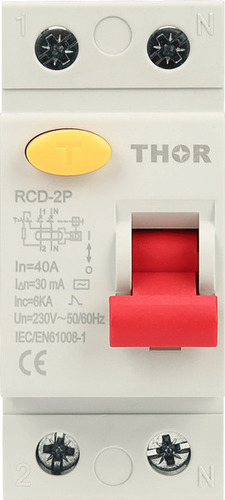
A type residual current device
● Purpose: RCDs are particularly important in situations where there is direct contact with electrical equipment, such as in bathrooms or outdoor environments.
● Triggers: They can respond within milliseconds and cut off power as soon as an abnormality is detected.
● Different Types: Depending on the use, there are various RCD types including fixed, socket-mounted and portable.
SPD vs. MCB vs. RCD: key differences you should know
While both devices contribute to electrical safety, their roles are different:
1. Protection properties: SPD protects against voltage surges, while MCB protects against overcurrent conditions such as overload and short circuit.
2. Working mechanism: When the voltage exceeds a certain threshold, the SPD becomes conductive and transfers the excess voltage to the ground. Conversely, when the current is too high, the MCB breaks the circuit completely.
3. Usage scenarios: SPDs are critical in areas prone to lightning strikes or where sensitive electronic equipment is used, while MCBs are a standard component of almost all modern electrical installations.
4. Lifespan: Over time and after multiple surges, SPDs may degrade and require replacement. Miniature circuit breakers, on the other hand, can be reset after tripping, but may also need to be replaced after extended use or when they no longer function properly.
The difference between SPD and RCD
While both SPDs and RCDs play key roles in electrical safety, their primary functions are different:
The focus of SPD is to protect electrical equipment from overvoltage, ensuring its service life and preventing potential damage.
The RCD's primary concern is personal safety, ensuring that the risk of electrical shock is minimized in the event of a malfunction.
It is worth noting that although the functions of the two devices are different, they can be used together to provide comprehensive protection for the device and the user.
Although SPD, MCB and RCD have different functions, they can be used together to provide comprehensive protection for equipment and users.
In the world of electrical safety, it’s crucial to understand the tools at our disposal. While surge protection devices and earth leakage protection devices may have different primary purposes, they both emphasize the importance of protecting against the multifaceted risks present in electrical systems
How SPD, MCB, and RCD work coordinate for stronger circuit protection.
In a well-designed circuit protection system, SPD, MCB, and RCD must not just exist in parallel, but interact in a time-selective and function-selective manner. SPDs are installed upstream at the service entrance to intercept surges before they propagate. MCBs follow, segmenting circuits and enabling fault isolation. RCDs are placed downstream of MCBs to monitor leakage. Proper coordination ensures that SPDs clamp transients without affecting downstream devices, while MCBs and RCDs trip selectively—MCBs for overloads, RCDs for leakage—avoiding unnecessary outages.
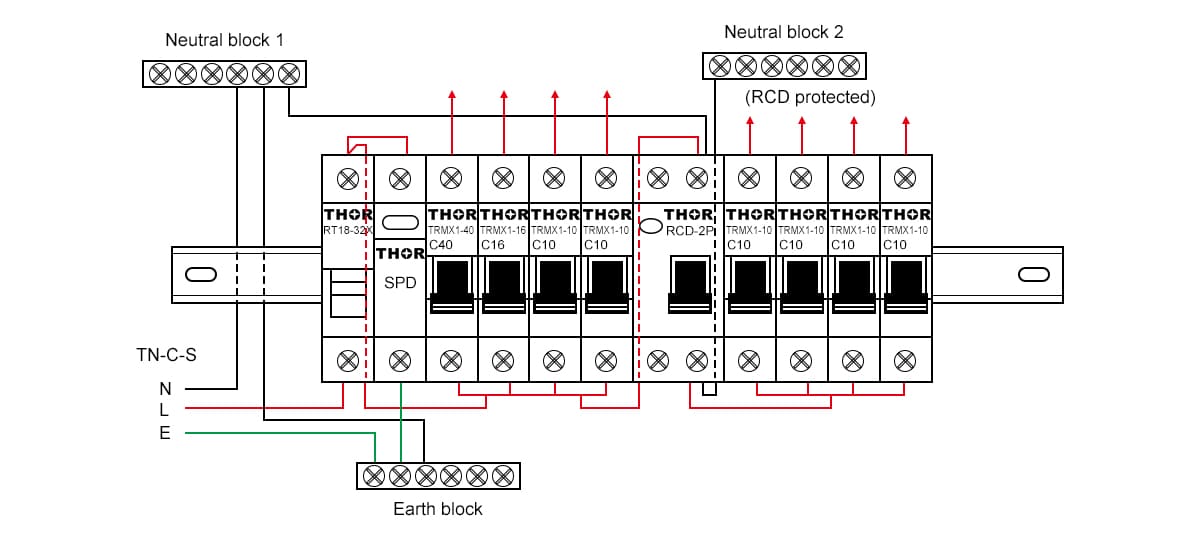
Figure 1 - SPD, MCB and RCD wiring diagram in a TN-C-S earthing system
The key to effective coordination is that SPDs must clamp transient surges without interfering with the performance of downstream MCBs and RCDs. MCBs and RCDs must be able to trip selectively without causing unnecessary disconnections.
TT System Coordination
In TT systems, where the earth resistance can be high, the coordination becomes more complex, where surge current discharged by an SPD might not generate enough fault current to trip the upstream MCB. For example, if a 10kA surge pulse is clamped by the SPD and injected into a 50Ω earth electrode, the resulting voltage at the PE terminal can rise dangerously without tripping the MCB. That’s where RCD comes in.
RCDs detect the leakage current imbalance (not necessarily overcurrent) between live conductors and neutral - even if the fault current is small, which, in TT systems, is often the only reliable disconnection method for earth faults following an SPD discharge.
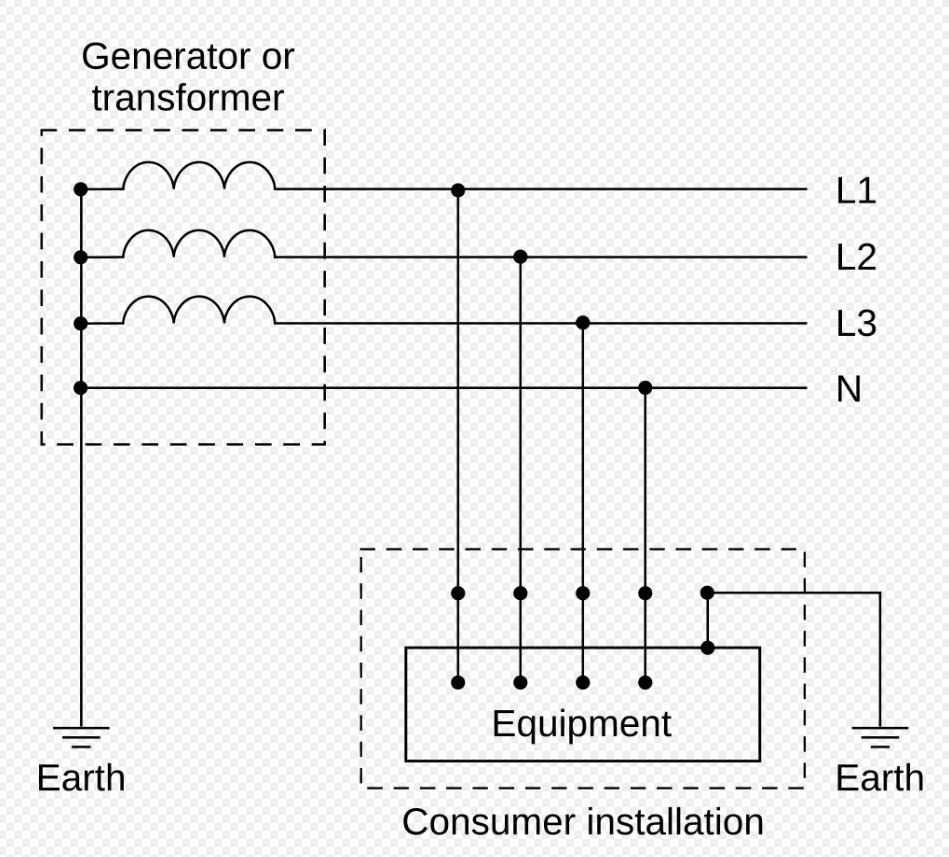
Figure 2 - TT earthing systems with an isolated earthing bar requirement
IT System Coordination
In IT systems, the complication shifts: the system’s neutral is isolated or impedance-earthed, so under the first fault (e.g., L1 to PE), the fault current is minimal, and neither MCBs nor RCDs trip. SPDs can still operate during overvoltage, but leakage risks remain latent. To detect the first earth fault, insulation monitoring devices (IMDs) are often paired with RCDs or used standalone. Once a second fault occurs (e.g., L2 to PE), differential-mode current flows - then the RCD becomes vital, since MCBs might still not detect it depending on impedance distribution.
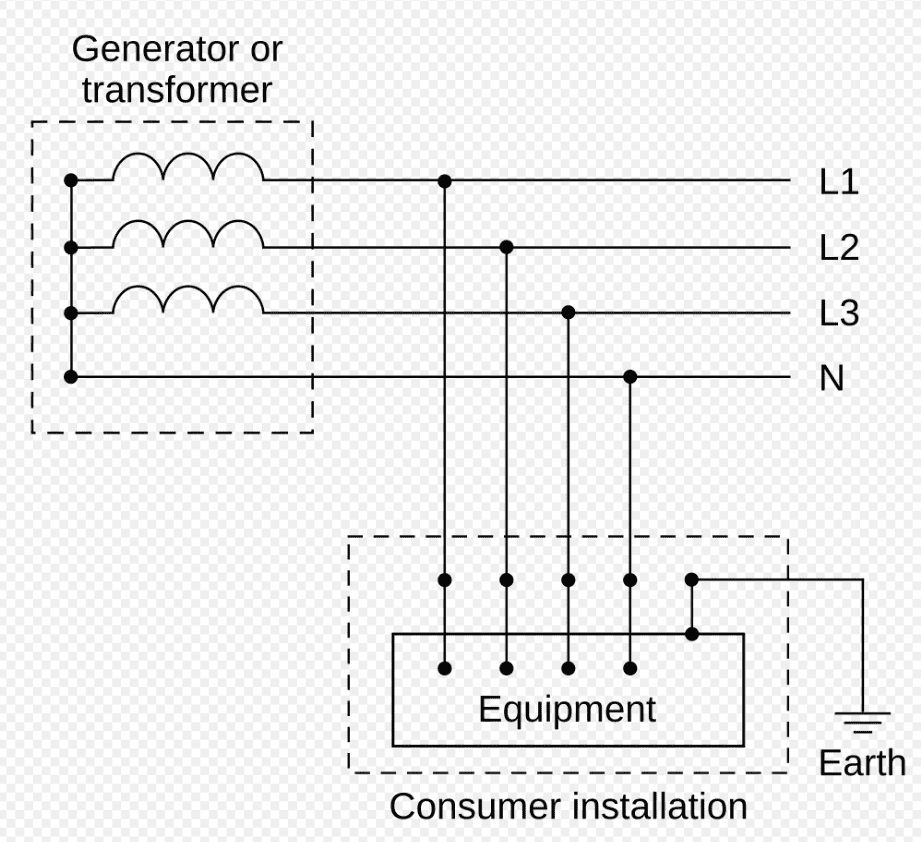
Figure 3 - IT earthing system with no grounding or with high-impedance grounding
A key coordination requirement is to position RCDs in a way that they are not downstream of SPD paths where surge discharge current could flow through them. If surge energy passes through the RCD, it may cause nuisance tripping. To address this, solutions such as using time-delay RCDs or carefully positioning the devices are applied to prevent surge currents from reaching the RCD coil.
Coordination in TT and IT Systems:
RCDs are the primary devices for disconnection in both TT and IT systems after SPD discharge.
MCBs are ineffective in TT and IT systems alone because of low fault currents from high earth resistance or isolated neutral configurations.
SPD discharge paths need to be designed to avoid passing surge energy through RCDs, preventing false tripping.
In IT systems, IMDs detect early fault conditions, enhancing overall system protection.

